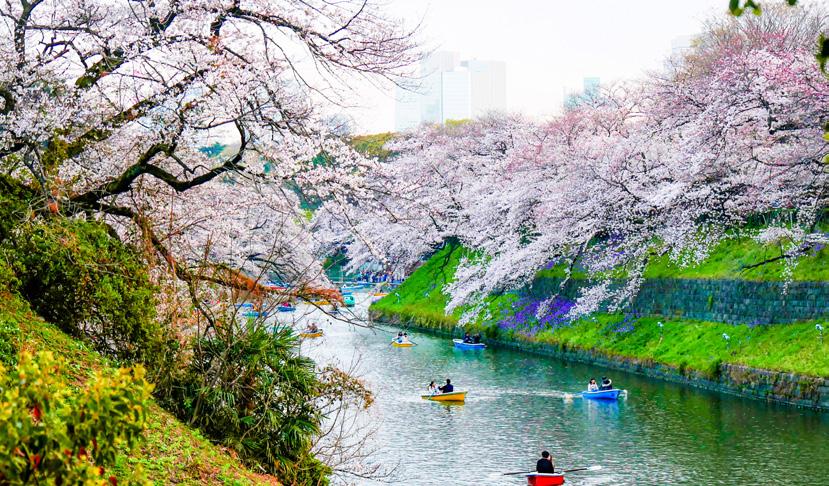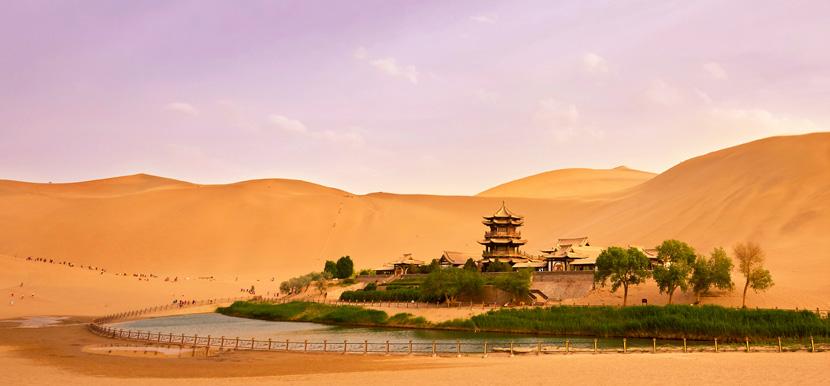
3 minute read
Head to Head: Japan
from Explore in 2021
JAPAN’S CHERRY BLOSSOMS JAPAN’S AUTUMN LEAVES
WHAT’S IT ALL ABOUT?
There’s a phenomena known as sakura that takes hold of Japan at the start of Spring every year. It so highly anticipated, that the Japanese Meteorological Agency even forecasts its arrival. We are of course talking about Japan’s famous cherry blossoms, where the country’s cherry trees spectacularly bloom into beautiful shades of white and pink. Only in bloom from late March to mid-April for around three weeks from south to north Japan, this fleeting and soughtafter event has captured the world.
CULTURE
The art of watching the cherry blossoms is known as hanami. As the cherry blossom season approaches there is great fervour in Japan as locals prepare for large picnic parties beneath the blossoms with their friends and families. Even companies reserve spots under the trees for their after-work parties! The Japanese will then drink sake and feast on bento boxes and pink themed sweets such as sakura flavoured KitKat chocolate bar!
HISTORY
The art of waiting for the cherry blossoms to bloom stems from 1,200 years ago where its appearance signified the start of the rice-planting season. As times passed, its popularity grew alongside the philosophical beliefs of the Japanese, where appreciation of nature and the natural order is rife. Today, the few weeks where cherry blossoms bloom are the most popular time to visit Japan, but also its most stunning.
CONCLUSION
Japan in either cherry blossom or autumn leaves season is a wonderful and stunning experience. Both seasons will allow you to see the vivid colours of the landscape as well as peeking into Japan’s culture as locals celebrate all around.
So, for us, we would choose the season that best suits you, or WHAT’S IT ALL ABOUT?

We all know what happens in the autumn; leaves change their colour before they drop. In Japan, this change of colour is hugely celebrated – in fact about 70% of Japan is covered in forests of deciduous trees and unlike the cherry blossoms, the sweep of colour change occurs from north to south and lasts much longer – around two months – from September in Hokkaido, to Tokyo and Kyoto by the end of November.
CULTURE
The art of following the autumn leaves is known as momijigari. As Japan’s maple and ginkgo trees turn from green to hues of gold, orange and red, both locals and tourists alike travel around the country to be dazzled by the bright foliage. It’s a celebration of the start of autumn, and one which is now ingrained into Japanese culture; many wearing kimonos with maple leaf patterns while enjoying Momiji tempura – delicious deep-fried maple leaves. It ma not be anticipated as much as the famous cherry blossoms, but don’t underestimate the beautiful array of leaves – they’ve been written into many Japanese poems and novels.
HISTORY
The tradition of momijigari has its roots in the Heian Period (794- 1185AD) where noble families and scholars would enjoy nature’s shift from green to gold. It was a tradition that the general public did not observe until much late in Japan’s history, in the Edo Period (1603-1868AD). It became popular to travel around Japan, so when news of stunning foliage reaches their ears, locals made the journey to distant areas solely to view them. The tradition continues today!
why not experience both? One thing is for certain: whenever you choose to go, you’ll have a memorable time.
Our Japan tours are designed with departures scheduled to enjoy cherry blossom season or autumn leaves, or you can create your own tailormade itinerary.
Visit: wendywutours.com.au/japan/cherry-blossom-tours










